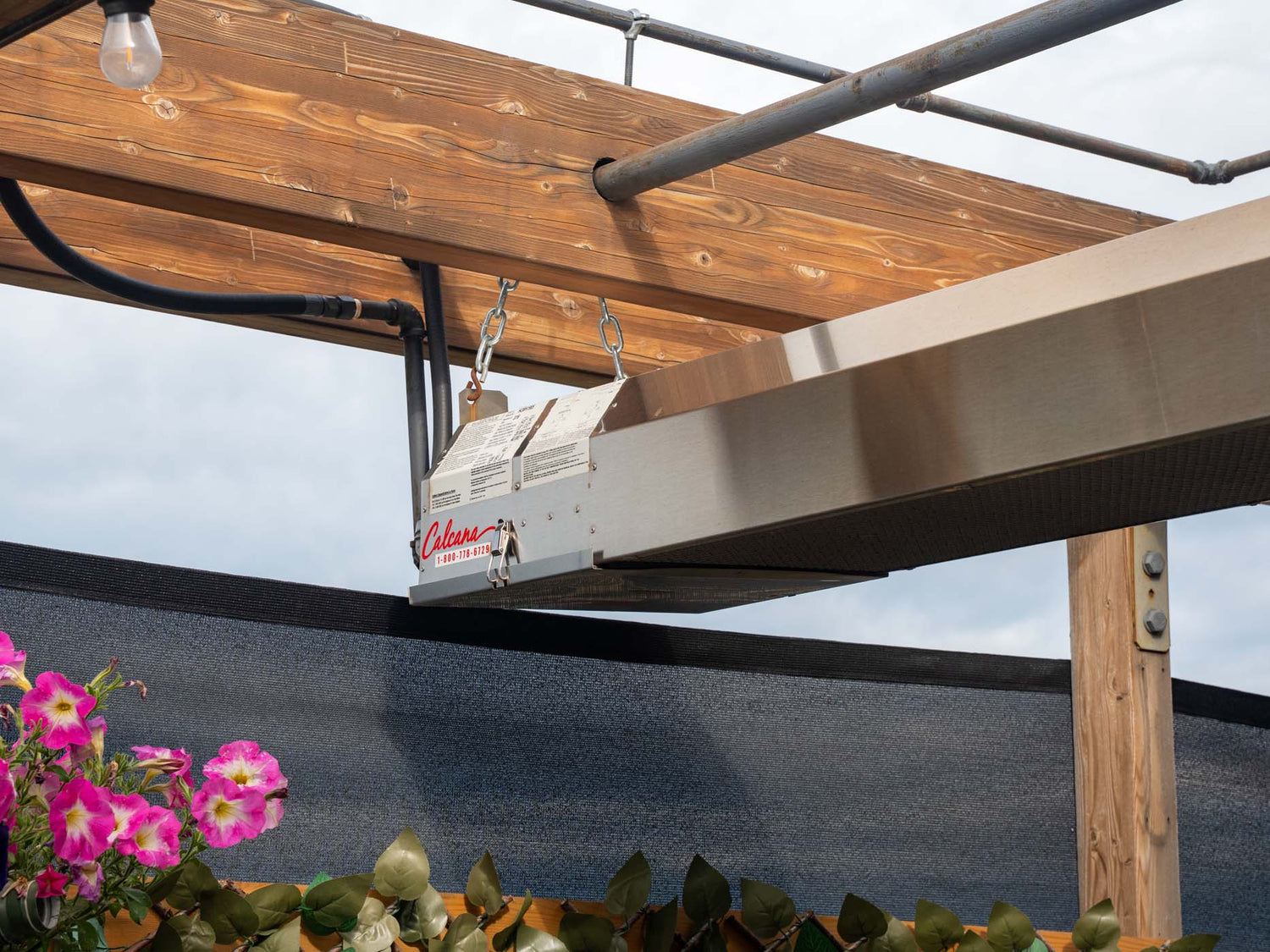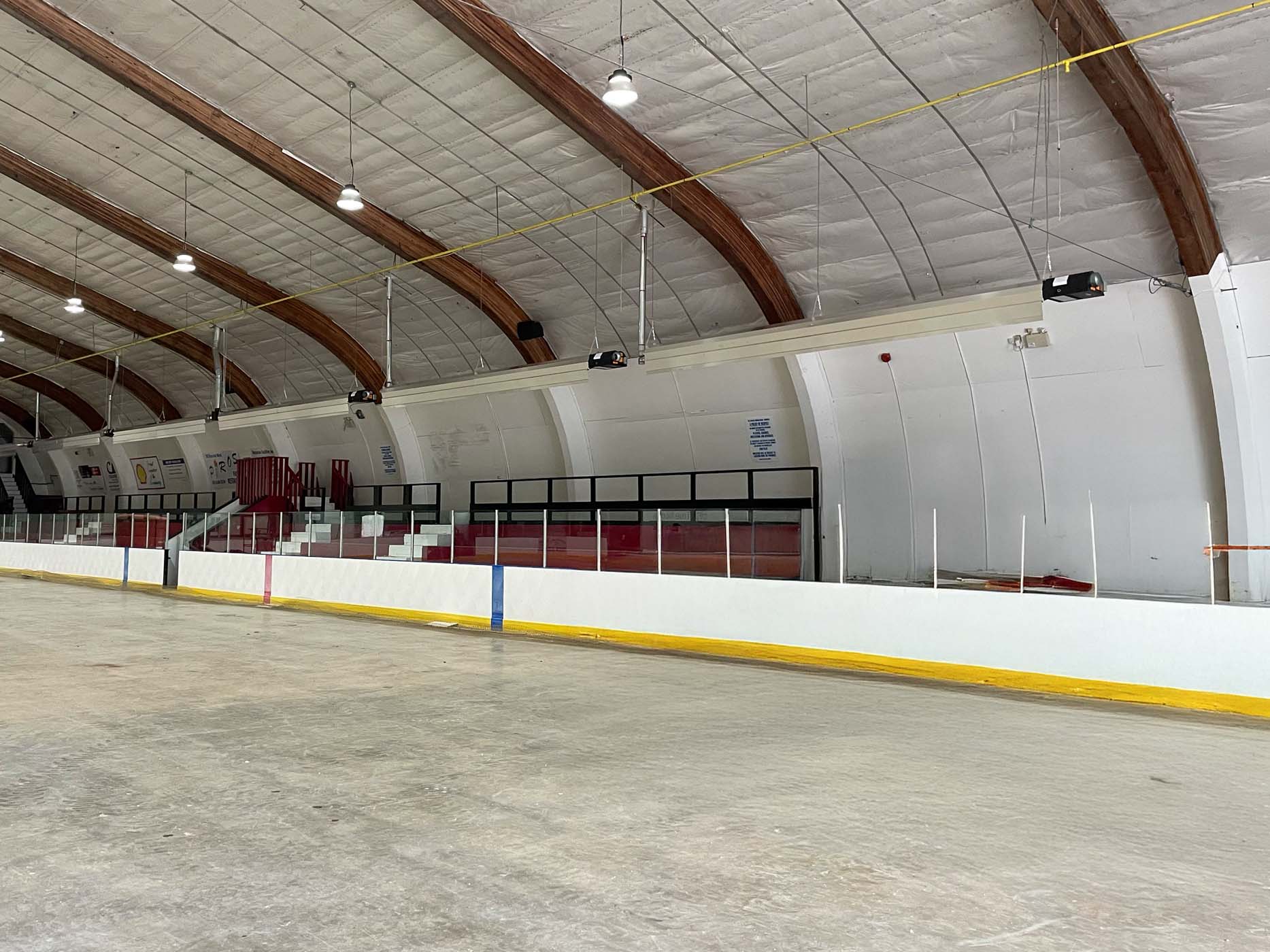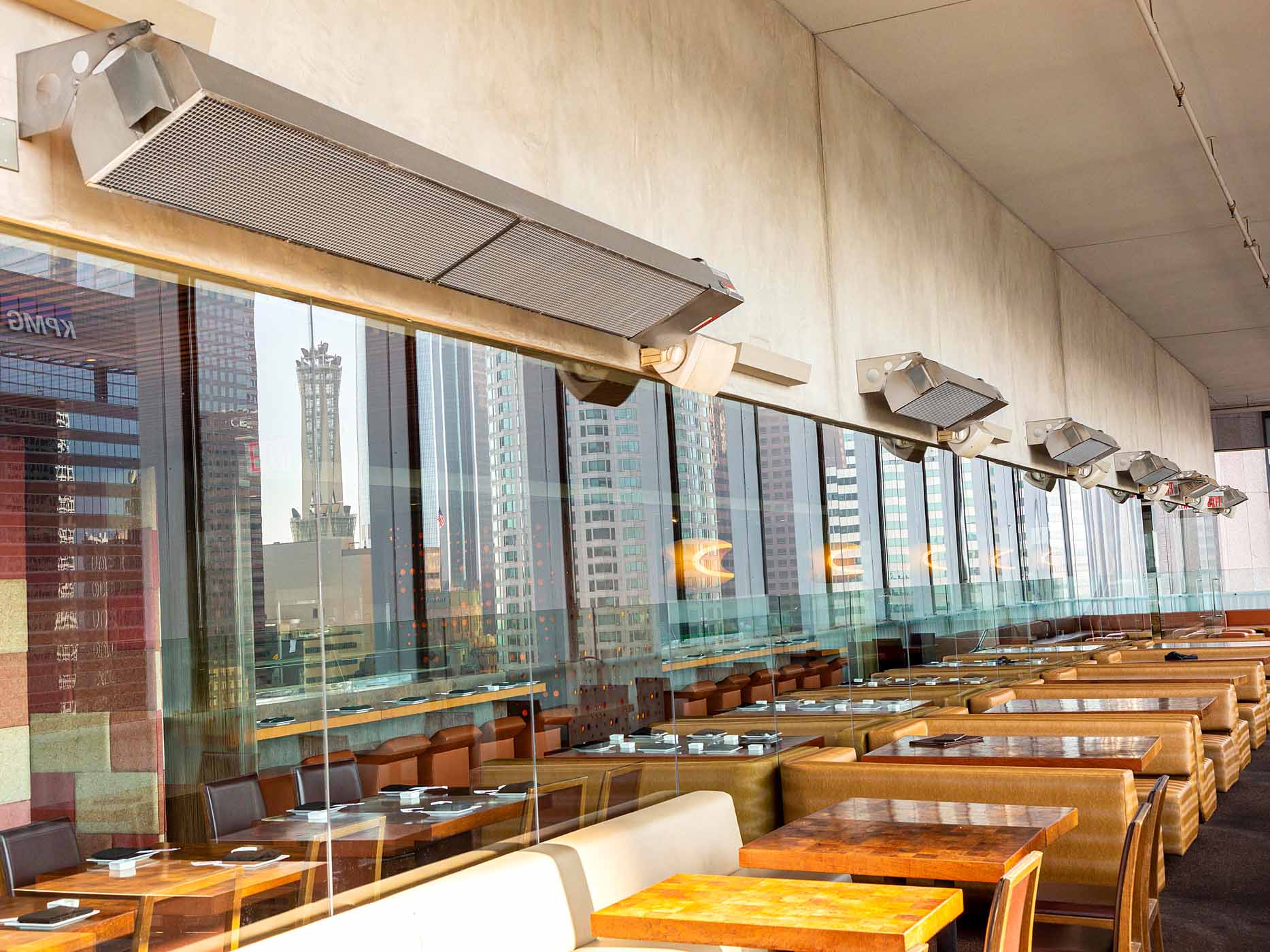Infrared (IR) heating technology has become one of the fastest-growing trends in both residential and commercial spaces. From cozy restaurant patios to sprawling industrial warehouses, infrared heaters promise efficient warmth without blowing air or wasting energy. Yet, as with any technology that produces heat, many people have questions about safety.
Are infrared heaters hazardous or harmful to health? Do they release chemicals when operating? Could infrared radiation cause cancer? And what about carbon monoxide, does it play a role in infrared heating?
This comprehensive guide tackles all of these questions head-on. We’ll explore how infrared heaters work, the science behind their emissions, their safety record, and the best practices for using them safely. By the end, you’ll have a clear understanding of why infrared heating is considered one of the safest, cleanest ways to warm indoor and outdoor spaces.
Infrared heaters produce heat by emitting infrared radiation, a type of electromagnetic energy just beyond the visible light spectrum. Unlike forced-air systems that heat the surrounding air, IR heaters warm objects and people directly. This is the same type of heat we feel from the sun or a campfire, but without the ultraviolet (UV) rays that cause sunburn.
Because IR heaters transfer heat directly, they reach a comfortable temperature faster and use energy more efficiently. Electric infrared heaters convert electricity into radiant heat with no combustion at all. Gas-fired infrared heaters (like many commercial patio units) use natural gas or propane to fuel a burner that emits radiant heat. Both types are designed to minimize emissions and maximize safety.
Are Infrared Heaters Hazardous to Health? Understanding Safety, Emissions, & Common Concerns
Anytime a new technology becomes mainstream, concerns arise, especially when terms like “radiation” are involved. Common fears include:
-
Radiation Exposure: People often hear “infrared radiation” and worry about harmful effects like those caused by ultraviolet light or X-rays.
-
Chemical Emissions: Users wonder if heaters release harmful gases, odors, or particulates.
-
Cancer Risks: Because certain types of radiation can be carcinogenic, the question of infrared causing cancer occasionally surfaces.
-
Carbon Monoxide: Since some infrared heaters burn gas, does this produce carbon monoxide?
Let’s break these down scientifically.
Is Infrared Radiation Harmful? Understanding the Science
Radiation simply means the transfer of energy through waves or particles. Infrared is part of the non-ionizing spectrum, which means it does not carry enough energy to remove electrons from atoms or damage DNA. Non-ionizing radiation includes visible light, radio waves, and microwaves, all of which are widely considered safe at normal exposure levels.
In fact, infrared energy is everywhere. Your own body emits it naturally. The warmth you feel from sunlight on your skin is mostly infrared. The difference between sunlight and an infrared heater is that the heater does not emit ultraviolet rays. Therefore, there’s no risk of sunburn or UV-related skin cancer from infrared heaters.
Scientific studies and safety standards worldwide, including those from the International Commission on Non-Ionizing Radiation Protection (ICNIRP), support the conclusion that infrared heaters are safe for everyday use when installed correctly.
Do Infrared Heaters Release Chemicals or Fumes?
This depends on the type of heater:
-
Electric Infrared Heaters: These contain a heating element that glows and emits infrared heat. Because there’s no combustion, there are no gases, fumes, or chemicals released. They’re considered “zero-emission” appliances.
-
Gas-Fired Infrared Heaters: These use natural gas or propane as fuel. Like any combustion appliance, they produce small amounts of carbon dioxide (CO₂) and water vapor. High-quality units, like Calcana’s gas infrared heaters, are engineered to burn fuel very efficiently, minimizing emissions and preventing incomplete combustion. When properly installed with adequate ventilation (outdoors or vented indoors), these units do not release harmful chemicals into the breathing zone.
You may occasionally smell a faint odor when a new heater is first turned on; this is usually the result of protective oils burning off the metal surfaces, not ongoing chemical emissions.
Does Infrared Heating Cause Cancer?
There is no evidence linking infrared heating to cancer. The type of radiation that can cause DNA damage, ionizing radiation, comes from sources like X-rays, gamma rays, or certain radioactive materials. Infrared, like visible light, does not have enough energy to alter DNA.
In occupational settings, extremely high levels of infrared (such as in glassblowing or metal foundries) can contribute to long-term eye or skin irritation if workers aren’t protected. But those levels are far beyond anything produced by commercial or residential heaters. Modern infrared heaters for patios, warehouses, or homes operate well within recognized safety limits.
Carbon Monoxide & Infrared Heaters: What You Need to Know
Carbon monoxide (CO) is a colorless, odorless gas produced when carbon-based fuels burn incompletely. Because it can be dangerous at high concentrations, it’s an important factor to consider for any gas appliance.
Electric infrared heaters: produce zero CO, they’re completely safe in this regard.
Gas infrared heaters: When designed and installed properly, they burn fuel efficiently, producing mainly CO₂ and water vapor, with negligible CO output. Outdoor patio heaters or well-ventilated indoor installations keep any residual gases diluted to harmless levels.
Always follow manufacturer installation guidelines. For unvented gas heaters used indoors (which Calcana does not produce), carbon monoxide detectors are strongly recommended.
Challenges of Heating Large Spaces with Traditional Systems
Before infrared heating became popular, warming large open spaces, like warehouses, sports facilities, or restaurant patios, was inefficient. Forced-air systems heat air, which quickly rises and escapes in high-ceilinged or drafty environments. This leads to hot ceilings and cold floors, wasted energy, and uncomfortable occupants.
Gas-fired forced-air heaters also introduce combustion gases that must be vented and filtered. Meanwhile, electric baseboard or convection heaters are too small and slow to handle big volumes. This is why property owners began looking for alternatives, and infrared heating emerged as a game-changer.
How Infrared Heaters Perform in Large Areas
Infrared heaters excel in large open spaces because they heat objects and people directly rather than relying on warming air. This “line-of-sight” heating minimizes stratification and energy waste. In warehouses, workers feel comfortable even when the air temperature is cooler. On patios, guests enjoy warmth even in breezy conditions.
Well-sized infrared systems can cover thousands of square feet with even, targeted heat. Because the air isn’t the primary medium, opening doors or windows doesn’t immediately disperse the warmth.
Indoor Applications: Warehouses, Garages, Churches, & More
Many indoor facilities have adopted infrared heating to solve long-standing comfort and cost issues:
-
Warehouses & Distribution Centers: Large doors frequently open and close, letting warm air escape. Infrared heat provides localized comfort zones without heating all the air.
-
Garages & Workshops: Mechanics stay warm even when bay doors are open.
-
Aircraft Hangars: High ceilings are no problem for radiant heat.
-
Churches & Event Spaces: Quiet, gentle warmth improves congregant comfort without noisy blowers.
In all these settings, safety is paramount. Modern gas-fired infrared heaters are built to stringent standards, using sealed combustion chambers and protective grilles to prevent accidental contact with hot surfaces.
Outdoor Applications: Patios, Stadiums, & Open-Air Venues
Infrared heating truly shines outdoors where traditional systems fail. Because it heats surfaces, not air, it remains effective even in mild wind. That’s why restaurants, sports arenas, and public spaces increasingly use infrared patio heaters to extend their season.
-
Restaurants & Bars: Outdoor dining remains comfortable well into cooler months.
-
Sports Venues: Spectator areas and player benches benefit from localized warmth.
-
Event Spaces & Markets: Pop-up tents or open-air pavilions gain welcoming heat without enclosing the space.
As always, outdoor heaters must be installed according to safety codes, clearances from combustible materials, secure mounting, and proper gas connections ensure safe operation.
Sizing Infrared Heaters for Large Spaces
To maximize both comfort and safety, it’s essential to size your infrared heating system correctly. Undersized units won’t deliver sufficient warmth; oversized units may cause uncomfortable hot spots or waste fuel.
Professional suppliers like Calcana offer layout assistance, calculating:
-
Square footage and ceiling height
-
Desired temperature rise
-
Ventilation and air movement
-
Mounting height and heater spacing
Proper design ensures even coverage and optimal performance without exceeding safe radiant intensities.
Maintenance Needs of Infrared Heaters
A well-maintained infrared heater is a safe heater. Fortunately, maintenance requirements are modest compared to forced-air systems:
-
Gas Units: Periodic inspection of burners, gas connections, and reflectors; clearing any dust or debris.
-
Electric Units: Checking wiring, elements, and mounting brackets.
Routine service by a qualified technician ensures clean combustion, proper venting, and efficient operation, all of which minimize emissions and maintain safety.
Cost Savings & ROI
Beyond health and safety, infrared heaters offer tangible financial benefits. Because they heat people and objects directly, energy use can drop 30–50% compared to conventional systems in large or open spaces. Lower energy use means lower greenhouse gas emissions, aligning with sustainability goals.
In commercial settings, this efficiency often translates into a rapid return on investment (ROI). Plus, happier patrons or employees mean higher retention and revenue.
Choosing the Best Infrared Heater for a Large Room
Not all infrared heaters are created equal. Key factors to consider:
-
Fuel Source: Electric vs. gas, depending on available utilities and ventilation.
-
Mounting Options: Ceiling, or wall.
-
Output and Coverage: Measured in BTUs or kilowatts.
-
Build Quality: Corrosion-resistant materials for outdoor use.
-
Controls & Modulation: Ability to adjust heat output for changing conditions.
Consulting with a reputable manufacturer like Calcana helps ensure your system meets both your comfort and safety needs.
Final Thoughts: Safety & Confidence in Infrared Heating
Infrared heaters, when chosen and installed properly, are among the safest and cleanest heating solutions available today. They do not emit harmful UV rays or carcinogenic radiation. Electric units release no gases at all, while gas units, when professionally installed, produce minimal emissions well within regulatory limits.
Concerns about chemicals, cancer, or carbon monoxide are understandable but largely unfounded for quality equipment used as directed. By following manufacturer guidelines and performing routine maintenance, you can enjoy the efficiency, comfort, and reliability of infrared heating without compromising health or safety.
Whether you’re heating a backyard patio, a bustling restaurant, a sprawling warehouse, or a large open-air venue, infrared technology offers a proven, energy-saving path to comfort, and peace of mind.




Leave a comment
This site is protected by hCaptcha and the hCaptcha Privacy Policy and Terms of Service apply.